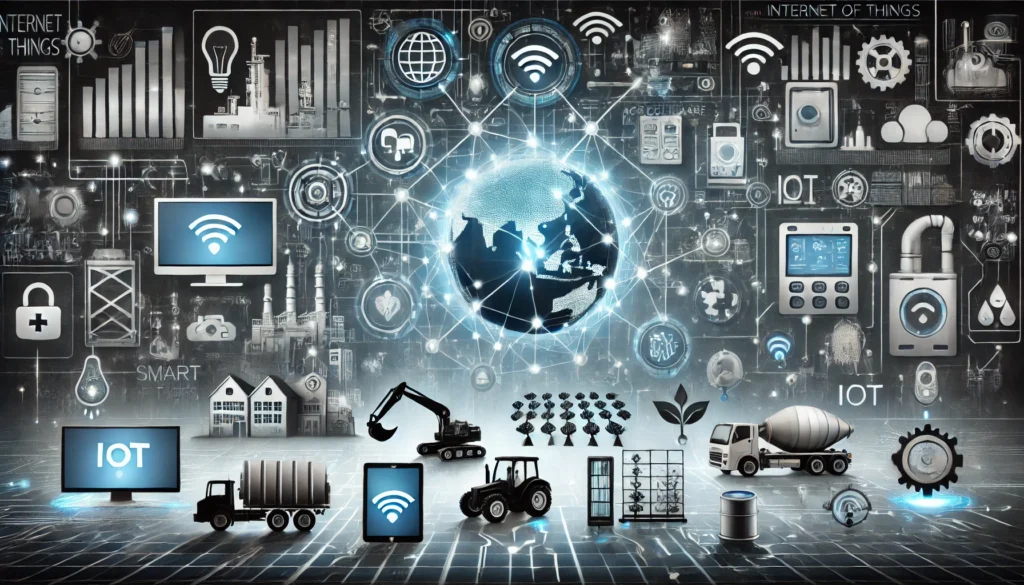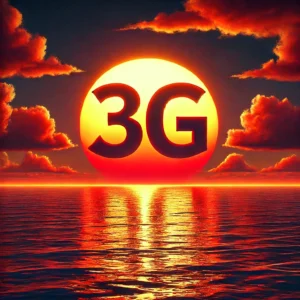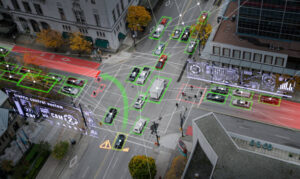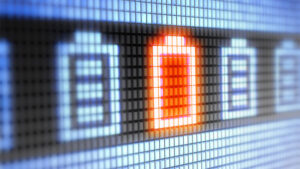The Internet of Things (IoT) refers to the interconnected network of physical objects embedded with sensors, software, and other technologies. These devices, often referred to as “smart” devices, collect and exchange data over the internet without requiring human-to-human or human-to-computer interaction. The primary goal of IoT is to create a seamless flow of data between the physical and digital worlds, enhancing the efficiency and effectiveness of various processes.
The Evolution of IoT
The concept of IoT has evolved significantly since its inception. The journey began with the advent of machine-to-machine (M2M) communication, where devices could exchange data without human intervention. With advancements in wireless technology, microelectromechanical systems (MEMS), and the internet, M2M communication transformed into what we now know as IoT.
In the early 2000s, the term “Internet of Things” was coined, and the focus shifted to connecting everyday objects to the internet. The proliferation of affordable sensors, the development of robust communication protocols, and the rise of cloud computing further accelerated IoT adoption. Today, IoT encompasses a wide range of applications across various industries, from smart homes and cities to industrial automation and healthcare.
Importance of IoT in Today’s World
IoT plays a crucial role in transforming how we live, work, and interact with the world around us. Here are some key reasons why IoT is important in today’s world:
- Enhanced Efficiency and Productivity: IoT enables automation of routine tasks and processes, leading to increased efficiency and productivity. For instance, in manufacturing, IoT devices can monitor machinery in real-time, predict maintenance needs, and reduce downtime.
- Improved Decision-Making: IoT provides real-time data and insights, allowing businesses and individuals to make informed decisions. For example, smart agriculture solutions use IoT sensors to monitor soil conditions and weather patterns, helping farmers optimize crop yields.
- Cost Savings: By optimizing resource usage and reducing waste, IoT helps in cutting costs. Smart energy management systems, for example, use IoT to monitor and control energy consumption, leading to significant savings on utility bills.
- Enhanced Safety and Security: IoT enhances safety and security through real-time monitoring and alerts. In smart cities, IoT-enabled surveillance systems and traffic management solutions improve public safety and reduce accidents.
- Better Quality of Life: IoT improves the quality of life by making daily activities more convenient and efficient. Smart home devices, such as thermostats, lighting systems, and security cameras, offer greater control and automation, enhancing comfort and security.
How IoT Works
IoT systems are built on several fundamental components that work together to enable seamless data collection, processing, and communication. These components include:
- Sensors/Devices: Sensors or devices are the core elements of an IoT system. They gather data from their environment, such as temperature, humidity, light, motion, or other specific metrics. These sensors can be simple, single-function devices or more complex devices with multiple sensors and capabilities.
- Connectivity: Once data is collected by sensors, it needs to be transmitted to a central processing system. This is achieved through various connectivity technologies, which form the backbone of IoT communication.
- Data Processing: The raw data collected by sensors is sent to a central processing unit, often in the cloud, where it is analyzed and processed. This stage involves filtering, aggregating, and analyzing the data to extract meaningful insights.
- User Interface: The processed data is then presented to the end-users through user interfaces such as dashboards, mobile apps, or other display systems. These interfaces allow users to monitor and control their IoT devices in real-time, making informed decisions based on the data insights.
Connectivity Technologies Used in IoT
IoT relies on a variety of connectivity technologies to facilitate data transmission between devices and central systems. Key technologies include:
- 2G/3G/4G: Cellular networks provide wide-area coverage and are suitable for mobile IoT applications. However, with the upcoming 2G and 3G network sunsets, it’s important to transition to newer technologies. Learn more about preparing for the 2G and 3G network sunset.
- NB-IoT (Narrowband IoT): Designed for low-power, wide-area applications, NB-IoT is ideal for devices that require long battery life and operate in remote locations.
- LoRaWAN: This long-range, low-power technology is perfect for applications that need extensive coverage but low data rates, such as smart agriculture and environmental monitoring.
- Sigfox: A low-power, wide-area network (LPWAN) technology, Sigfox is used for simple, low-energy IoT applications that require minimal data transmission.
- Satellite: For remote areas where terrestrial networks are unavailable, satellite connectivity ensures reliable IoT communication.
Data Collection and Analysis
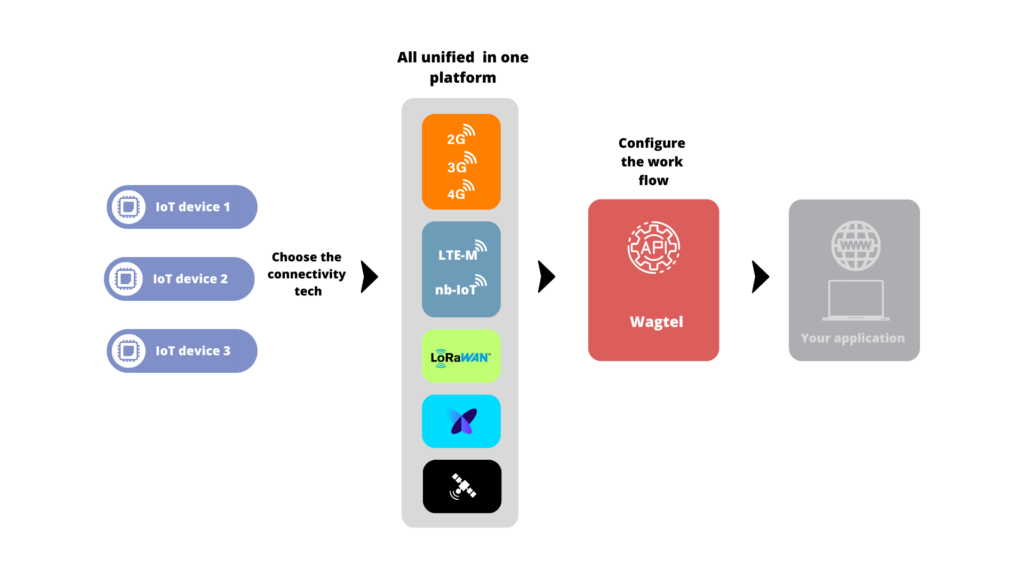
Data collection and analysis are critical processes in IoT systems. Here’s how they work:
- Data Collection: Sensors continuously gather data from their environment. This data can include various metrics like temperature, humidity, light levels, motion, and more, depending on the application.
- Data Transmission: The collected data is transmitted to a central server or cloud-based platform using the aforementioned connectivity technologies. This transmission must be secure and reliable to ensure data integrity.
- Data Processing and Analysis: Once the data reaches the central processing unit, it undergoes various stages of analysis. This can include real-time processing for immediate insights or batch processing for more in-depth analysis. Advanced analytics, including machine learning and artificial intelligence, can be applied to predict trends, detect anomalies, and provide actionable insights.
- Data Presentation: The analyzed data is then presented to users through intuitive dashboards, reports, and alerts. This allows users to make informed decisions, optimize operations, and respond to issues promptly.
By understanding the key components, connectivity technologies, and data processes involved in IoT, businesses can better implement and manage their IoT solutions for enhanced performance and efficiency.
Benefits of IoT
The Internet of Things (IoT) offers numerous benefits that revolutionize various sectors by enhancing efficiency, decision-making, cost savings, and safety. Here’s a detailed look at these advantages:
Increased Efficiency and Productivity
IoT devices automate routine tasks and optimize processes, leading to significant improvements in operational efficiency and productivity. In manufacturing, for example, IoT sensors monitor machinery performance in real-time, allowing for predictive maintenance. This minimizes downtime and ensures that equipment operates at peak efficiency. Additionally, IoT-enabled logistics systems can track inventory and optimize supply chain management, reducing delays and improving workflow efficiency.
Enhanced Decision-Making
IoT provides real-time data and insights, enabling more informed and timely decision-making. For instance, in smart agriculture, IoT sensors collect data on soil conditions, weather patterns, and crop health. This information helps farmers make precise decisions about irrigation, fertilization, and harvesting, ultimately leading to higher crop yields and resource optimization. In urban planning, IoT data can be used to manage traffic flows, reduce congestion, and improve public transportation systems.
Cost Savings
By optimizing operations and improving resource management, IoT helps businesses save costs in several ways. IoT-enabled energy management systems monitor and control energy usage in buildings, reducing waste and lowering utility bills. In industrial settings, predictive maintenance driven by IoT data can prevent costly machinery breakdowns and extend the lifespan of equipment. Additionally, IoT solutions in logistics can reduce fuel consumption and optimize delivery routes, leading to significant cost reductions.
Improved Safety and Security
IoT enhances safety and security through continuous monitoring and real-time alerts. In smart cities, IoT-powered surveillance systems provide real-time video feeds and analytics to law enforcement agencies, helping to prevent and respond to criminal activities more effectively. In healthcare, IoT devices can monitor patients’ vital signs and send alerts to healthcare providers in case of emergencies, ensuring timely intervention. Industrial IoT applications can monitor hazardous conditions and automatically shut down machinery to prevent accidents, protecting workers and reducing risks.
Applications of IoT
The Internet of Things (IoT) is revolutionizing various sectors by providing innovative solutions that enhance efficiency, productivity, and quality of life. Here are some key applications of IoT:
Industrial IoT (IIoT)
Industrial IoT, or IIoT, focuses on using IoT technology in manufacturing and industrial processes. IIoT applications include:
- Predictive Maintenance: IoT sensors monitor machinery in real-time, predicting failures before they occur and scheduling maintenance to avoid downtime.
- Supply Chain Optimization: IoT devices track goods throughout the supply chain, improving inventory management and logistics.
- Automation: IoT enables automation of production processes, increasing efficiency and reducing human error.
Smart Cities
IoT plays a crucial role in developing smart cities, where technology is used to improve urban living. Applications include:
- Traffic Management: IoT sensors and cameras monitor traffic flow, adjust signal timings, and reduce congestion.
- Waste Management: Smart bins equipped with IoT sensors monitor waste levels and optimize collection routes.
- Energy Management: IoT devices manage street lighting and building energy use, reducing consumption and costs.
Healthcare
IoT is transforming healthcare by enabling better patient care and operational efficiency. Key applications include:
- Remote Monitoring: IoT devices monitor patients’ vital signs and send data to healthcare providers in real-time, enabling remote diagnosis and treatment.
- Asset Tracking: IoT helps track medical equipment and ensure it is available when needed.
- Smart Hospitals: IoT systems manage hospital operations, from patient flow to energy use, improving efficiency and patient care.
Agriculture
IoT in agriculture, also known as smart farming, optimizes resource use and improves crop yields. Applications include:
- Precision Farming: IoT sensors monitor soil conditions, weather, and crop health, enabling data-driven decisions on irrigation, fertilization, and harvesting.
- Livestock Monitoring: IoT devices track animal health and location, improving management and productivity.
- Automated Irrigation: IoT systems control irrigation based on real-time soil moisture data, conserving water and optimizing crop growth.
Home Automation
IoT enhances home automation by providing smart solutions that improve convenience, security, and energy efficiency. Applications include:
- Smart Thermostats: IoT-enabled thermostats adjust heating and cooling based on occupancy and preferences, saving energy.
- Security Systems: IoT cameras and sensors monitor homes in real-time, providing alerts and remote access to security feeds.
- Lighting Control: Smart lighting systems adjust brightness and color based on time of day and occupancy, enhancing comfort and saving energy.
Preparing for the Future
The Internet of Things (IoT) continues to evolve, with new trends and technologies shaping its future. Here are some key areas to watch:
Emerging Trends
Edge Computing: Edge computing brings data processing closer to the source of data generation, reducing latency and bandwidth use. This trend is crucial for real-time applications in IoT, such as autonomous vehicles and smart grids.
AI and Machine Learning: The integration of AI and machine learning with IoT devices enhances data analysis, enabling predictive maintenance, advanced automation, and smarter decision-making.
Blockchain Technology: Blockchain provides secure and transparent data transactions, enhancing trust and security in IoT networks. This technology is particularly useful in supply chain management and financial transactions.
6G and its Potential Impact on IoT: While still in its conceptual stages, 6G promises even faster speeds, lower latency, and greater capacity than 5G. Its potential to handle massive data volumes and support advanced applications like holographic communication and digital twins could significantly enhance IoT capabilities.
The Role of 5G in IoT
5G technology promises to revolutionize IoT with its high-speed, low-latency, and high-capacity capabilities. The benefits of 5G in IoT include:
- Faster Data Transfer: 5G significantly improves data transfer speeds, enabling real-time data processing and analysis.
- Low Latency: The reduced latency of 5G allows for near-instantaneous communication, essential for applications like autonomous driving and remote surgery.
- Increased Device Capacity: 5G can support a much larger number of connected devices per square kilometer, making it ideal for dense IoT environments like smart cities and industrial automation.
The 2G and 3G Network Sunset
As the industry moves forward, older network technologies like 2G and 3G are being phased out. This network sunset is critical for making room for more advanced technologies like 4G, 5G, and NB-IoT.
Preparing for the Transition: It’s essential for businesses relying on 2G and 3G networks to prepare for this transition to avoid service disruptions. Transitioning to newer technologies ensures continued connectivity and access to improved features and capabilities.
For more information on how to prepare for the 2G and 3G network sunset, read our detailed guide on preparing for the 2G and 3G network sunset.
By staying informed about emerging trends and technological advancements, businesses can strategically prepare for the future of IoT, ensuring they remain competitive and innovative in a rapidly evolving landscape.
Conclusion
The Internet of Things (IoT) is transforming industries by connecting devices to facilitate real-time data exchange, leading to increased efficiency, enhanced decision-making, cost savings, and improved safety. Applications of IoT span industrial automation, smart cities, healthcare, agriculture, and home automation, showcasing its versatility and impact. As the IoT landscape evolves, it is essential to prepare for future advancements and transitions.
Wagtel supports seamless IoT operations through comprehensive connectivity solutions, including 2G, 3G, 4G, NB-IoT, LoRaWAN, Sigfox, and satellite. Being technology-agnostic, Wagtel ensures that IoT devices can connect to the internet regardless of the technology used. Learn more about the advantages of a technology-agnostic approach in our article on Advantages of Technology-Agnostic IoT Solutions.
Explore how Wagtel’s advanced IoT solutions can enhance your operations. Contact us to learn more about how we can support your IoT initiatives and drive your business forward.

